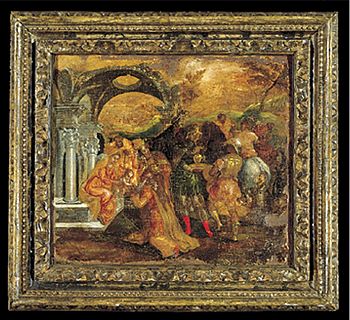Sometimes the stars all align, the weather goods smile benignly and one finds oneself able to create art in a truly magical place. That was what I felt about being on Sapelo Island this weekend, when I finally got to return as SINERR Artist-in-Residence with Marjett Schille.
For two days of glorious weather, (the azure cloudless skies and gentle temperatures type of weather), we were free to go where we pleased and just devote ourselves to art. There is a marvellous transition: you get on a ferry and leave behind daily life. You only need to concentrate on choosing a site suitable for the next plein air painting or drawing. Considerations of light, time of day for that light, where the tide is (if you are working along the beach), what medium is suitable for the next project: those are the weighty matters to ponder! All against the backdrop of a most beautiful and ecologically diverse island that is protected and preserved.
Marjett and I tumbled out of bed early each morning and were hard at work by eight to catch the wonderful morning light raking the sand dunes or sculpting trees. We worked steadily until the picture got finished, or finished us for the moment. We both did about three pieces a day, with Marjett working larger scale than I did. As I had planned, I did mostly silverpoint drawings, which seemed to take an age to do compared to Marjett's swiftly executed watercolours. Later, we assessed what we had done and "titivated" anything that needed adding or correcting. Since we have worked together a lot, we both respect the other person's eye for critiques. For me, it is a wonderful opportunity, as I tend to work alone and don't often have another artist to assess what I am doing. It is always a perfect learning opportunity when one has that luxury. It is also fun to share ideas on what title to give the work done, for titles are an interesting and sometimes polemical subject.
Sapelo Island with Lighthouse, Georgia
Now we are back "on the hill" as the locals refer to the mainland – and the weekend remains glowing in my mind. The artwork needs to get scanned and catalogued, and life already begins to knock at the door again. Nonetheless, when one is lucky enough to be able to go off and create art in a truly beautiful and magical place, it is more than luck.















